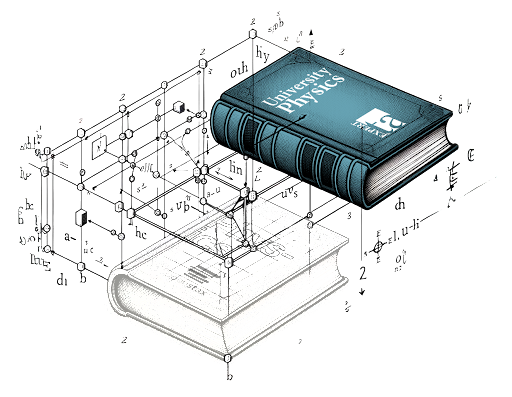Expert TA’s versions of OpenStax Physics
Responding to a call from the community, Expert TA is well underway with rewrites to transform the College Physics and University Physics textbooks by OpenStax. Their request, and our goal, is to make high-quality and affordable versions of these books that allow more instructors to consider adopting.
Expert TA’s online homework system is being used by over 700 instructors for introductory physics during the 2024-2025 Academic year. We already have a collaborative relationship with many of these instructors, and they have been more than happy to discuss the OpenStax textbooks.

From the hundreds of interactions with faculty about this topic, here are the top two sentiments we continue to hear,
“I would love to switch to an OER textbook and save my students money, but I haven’t found an option that I am confident in and that is a fit for my class.”
and,
“I have adopted one of the OpenStax textbooks, but there are things I am having to work around, and there are certain sections of the book where I direct students to alternative material.”
A commitment to affordability: The price of the books will be $15.
Customization: Our Editable eBooks Platform will allow instructors to start from either of our rewritten versions, or the original OpenStax version, and easily modify the book as needed.
Take a Closer Look: Learn more about the rewrite of University Physics. Details for College Physics is coming soon.
A Collaboration with the Physics Education Community
In a significant way, the community has let us know that a rewrite of the OpenStax books would be greatly welcomed. Many of these instructors have already adopted the OpenStax book and many others use a different book, but would love to have an affordable textbook. Some of these instructors are now working to help us to make these books great.
How You Can Help: If you would like to join the conversation or initiative, here are things you can do.
- Describe Your Ideal Book
- Tell us what you would do to make the book perfect for your class. This could be material that you think should be in a different order, specific sections that use notation that you do not, a request for more or different examples in a given area, etc.
- Honorarium-Based Focus Groups
- ($50 to $500 participation, depending on the level of involvement) We will send out invitations for these focus groups soon.
• Review our Roadmap for University Physics. We have a 25-page document with a section-by-section overview of what our team of authors and instructors think needs to be addressed in order to make the book great.
• Review individual chapters that have already been rewritten in a standalone way and provide feedback
• Review a given chapter or chapters, compare to the original OpenStax material, and provide feedback - Apply to join the Authoring/Editorial Team
- The team consists of active and emeritus faculty. Apply if you would like to be considered for any of these roles.
• Contract Author: Help to rewrite areas of the book to improve them.
• Reviewer: Read our new versions and provide feedback.
• Editorial Team Member: Join the higher-level discussions about the books.
Most Common Feedback about the OpenStax University Physics text
Here are some common points of feedback faculty shared about OpenStax University Physics and what we would need to adjust in order to make the text a better fit for them.
- Motion diagrams and motion graphs really enhance the learning of kinematics, and are strongly emphasized in contemporary physics textbooks, but aren’t emphasized in the OpenStax text.
- Graphical techniques to illustrate that integrals are the ‘area under a curve’ and derivatives are the ‘slope of a curve’ should be appropriately emphasized.
- Many examples in the book use content from future chapters, a practice that most faculty do not support.
- Key Terms are sometimes used before they are defined.
- Careful Sequencing Considerations:
- OpenStax uses kinematics in the introductory sections, such as units and unit conversions, and faculty would like this changed.
- Forces, torques and magnetic fields are used in the OpenStax chapter on vectors. Most faculty prefer using generic vectors at this point and not relying on concepts not yet presented.
- OpenStax uses momentum in the chapter on Newton’s laws, which is topic the students would not be familiar with yet.
- Significant figures are important and should be introduced and handled more consistently and with more care.
- Notation should be consistent from one dimension to multiple dimensions.
- Many faculty feel that notation in general needs to be cleaned up. Example: In Kinematics instructors would prefer use of ti and xi for “initial” values within definitions rather than t0 and x0 to make them generally applicable.
- Many faculty are opposed to using the phrase “centripetal force” and would like that language addressed.
- A more concise version of the text is desired by many.
